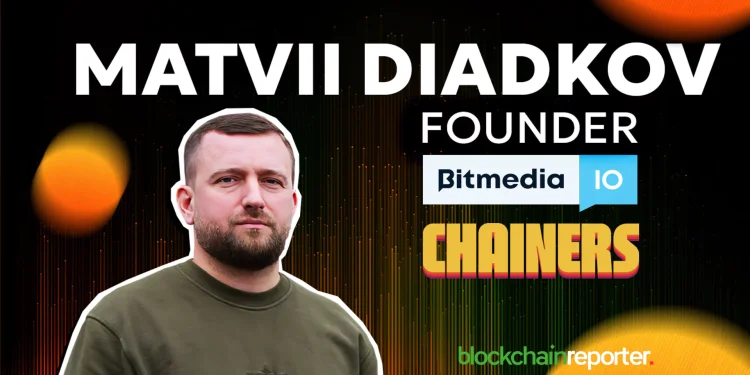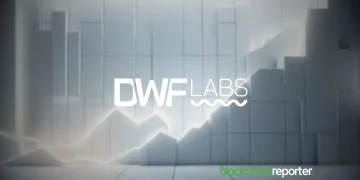Bitcoin’s secure but rigid network is evolving with a Bitcoin Renaissance, as layer 2 projects unlock its value for broader Web3 and finance use, benefiting investors. Today’s guest, Matvii Diadkov, entrepreneur and Web3 expert, founder of Bitmedia.io and Chainers.io, expressed his thoughts on Bitcoin L2 networks growth.
What is Bitcoin Renaissance
Bitcoin, traditionally seen as a digital gold for value preservation and inflation hedge, has faced skepticism due to its slow transaction speeds, lack of programmability, and limited scalability. Yet, a new dimension of Bitcoin is emerging, drawing attention from investors and crypto enthusiasts. This Bitcoin Renaissance leverages the blockchain as a foundation for diverse Web3 apps, introducing more flexibility and scalability, and facilitating access to DeFi and Web3 applications.
This shift could mark a new era for Bitcoin, one that might be underappreciated amidst the buzz of price surges following significant events like Donald Trump’s election victory in the US.
L2 Networks are on Rise
L2 platforms are built atop primary networks like Bitcoin or Ethereum, aiming to improve scalability while leveraging the security of the base layer. Bitcoin introduced the concept with the Lightning Network in 2015, but L2s have found broader adoption with Ethereum, primarily to enhance its scalability. Despite Ethereum’s native ability to support numerous dapps and its dominance in the DeFi space—holding nearly 60% of the sector’s $130 billion total value locked (TVL) as of mid-November 2024—L2 solutions are still important in its ecosystem.
Bitcoin’s L2 networks are expanding its utility with new features like smart contracts, enhancing its compatibility with Web3 and DeFi. This has opened up many apps, from instant, low-cost transactions via the Lightning Network to DeFi activities like lending and trading on platforms such as Merlin and Bitlayer.
In 2024, Bitcoin’s L2s experienced significant growth, with TVL jumping from 7,500 BTC in March to over 40,000 BTC—an increase of 430% in just eight months. This growth phase is also reflected in USD terms, with L2 TVL soaring from 480 million to over 3.5 billion, boosted further by a 35% rise in BTC price during the same period. If this rapid accumulation continues, Bitcoin’s L2s could surpass Ethereum’s L2 sector by hitting the $10 billion TVL mark in the first half of the next year.
Bitcoin L2 Networks Development
L2 networks enhance Bitcoin by scaling, adding smart contract capabilities, and ensuring compatibility with the Ethereum Virtual Machine, allowing the creation of Bitcoin-based smart contracts using Solidity. Initially, Rootstock and Stacks led the integration of smart contracts into Bitcoin. Rootstock, an EVM-compatible sidechain, enables the deployment of dapps secured by Bitcoin, using a 5-of-9 federated multi-sig mechanism, Powpeg, to safeguard BTC deposits while hosting data on its nodes.
Stacks function as a programmable layer for Bitcoin, providing the necessary infrastructure and user-friendly tools for dapp development. It supports applications from centralized and DeFi apps to staking, trading, NFTs, gaming, and stablecoins. Over the last year, the Bitcoin L2 market has seen growth with the entry of new participants.
- Merlin is a zk-rollup-based, EVM-compatible chain enhancing Bitcoin transaction scalability. It supports Bitcoin-based tokens via Ordinals or Runes protocols, hosting a variety of DeFi, gaming, social, NFT, and launchpad applications. Notable among these are Avalon Finance, a lending dapp found on various Bitcoin L2s, and Merlin Swap, a DEX for trading Bitcoin-related assets.
- BSquared is a Bitcoin L2 network utilizing ZK rollups to provide smart contract capabilities, along with bridges to Bitcoin and EVM chains. It hosts over 100 applications spanning various use cases, including unique yield farming options like Buzz Farming.
- BitLayer, an EVM-compatible sidechain, positions itself as the first L2 solution offering security on par with Bitcoin itself, along with Turing completeness. It features a trustless bridge and a Bitcoin verification layer known as OpVM, supporting different dapps, like Avalon Finance and Pell Network. Unique in its use of BitVM technology, introduced in 2023 by Robin Linus, BitLayer enables off-chain processing of Turing-complete smart contracts without compromising Bitcoin’s security.
Some fast-growing Bitcoin-related chains are connected to both Bitcoin and Ethereum:
- Core blockchain combines Bitcoin and Ethereum features, supporting EVM-compatible smart contracts with Bitcoin’s security. Its Satoshi Plus consensus, mixing Delegated Proof of Work and Stake with Bitcoin staking, boosts scalability and DeFi capabilities. As the fastest-growing Bitcoin L2, Core is close to reaching $1 billion in DeFi TVL, leading in technology and potentially speeding up Bitcoin’s Web3 adoption.
- BOB is a hybrid L2 combining BitVM technology with optimistic rollups and low-trust bridges, merging Ethereum’s ecosystem with Bitcoin’s security. It supports ETH and ERC-20 deposits, with transaction finality verified on Bitcoin.
The rush to build dapps on Bitcoin, despite faster alternatives like Solana, Sui, or Aptos, is due to Bitcoin’s unmatched security, backed by a vast miner network. This security, when applied to Web3 apps, offers unparalleled protection and opens significant BTC value for use in DeFi.
Depths Beyond Bitcoin’s Market Value
Bitcoin, known for its conservative approach and security thanks to its vast node network and Proof of Work algorithm, has seen developers push its boundaries. Innovations like Ordinals and Runes in 2023 introduced the ability to inscribe data on Bitcoin, enabling NFTs and digital assets on its mainnet.
Despite its need for scaling, early solutions like the Lightning Network faced challenges. However, newer L2 networks offer advanced technology, promising greater utility while maintaining Bitcoin’s core security.
Why Does It mean Today?
The emergence of Bitcoin layer 2 networks marks the beginning of a new era for the oldest cryptocurrency and the first application of blockchain. These L2 solutions are at an early development stage, presenting a prime opportunity for investors and developers to engage in what could be termed the Bitcoin Renaissance. Innovations like the Ordinals protocol alongside other L2 networks are laying the groundwork to enable smart contracts, NFTs, and DeFi functionalities on Bitcoin, blending security with programmability and versatility. As these technologies expand, Bitcoin is poised to redefine its role within Web3, securing a foundational position for dapps and catalyzing broader blockchain utilization across various practical applications.























